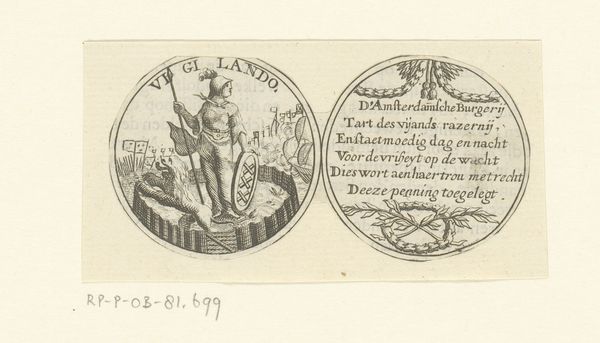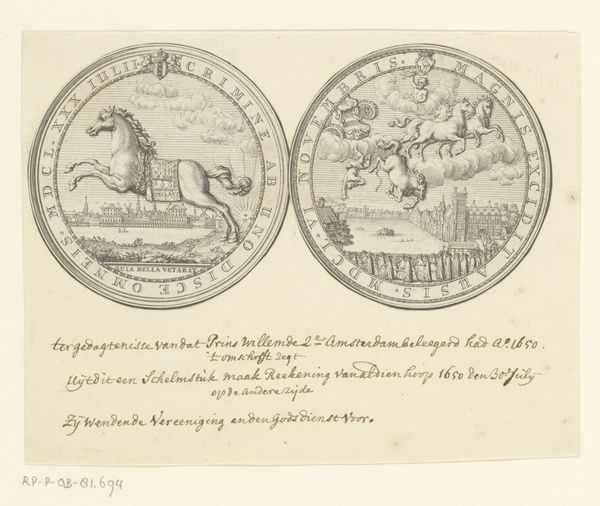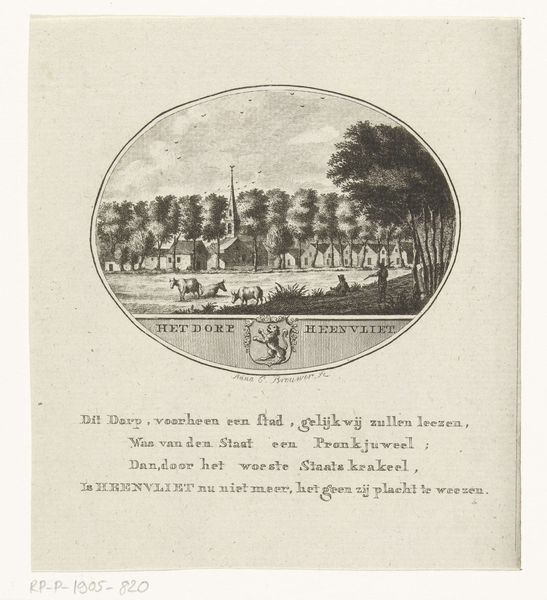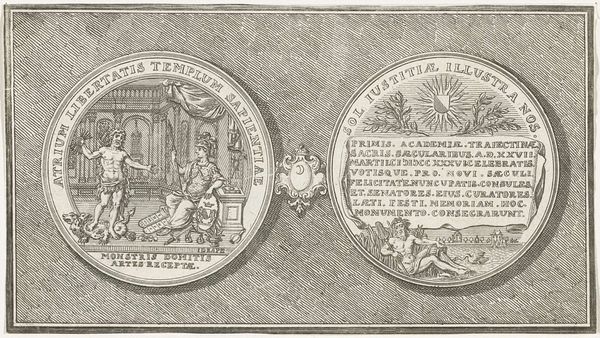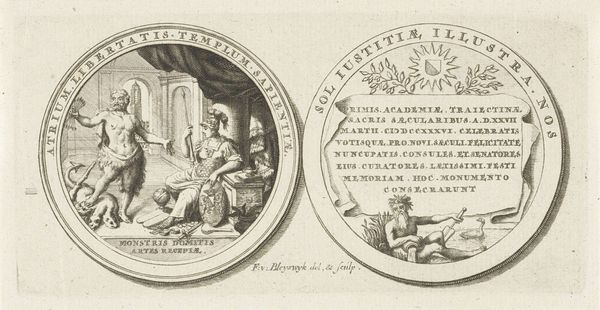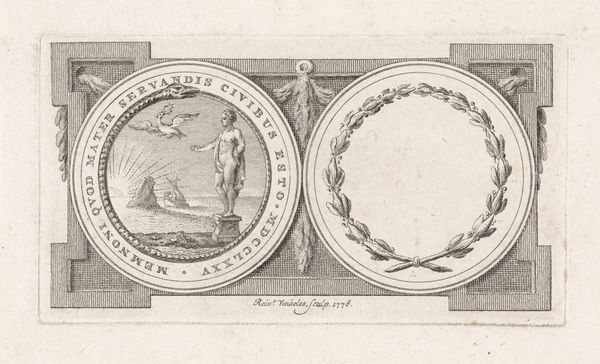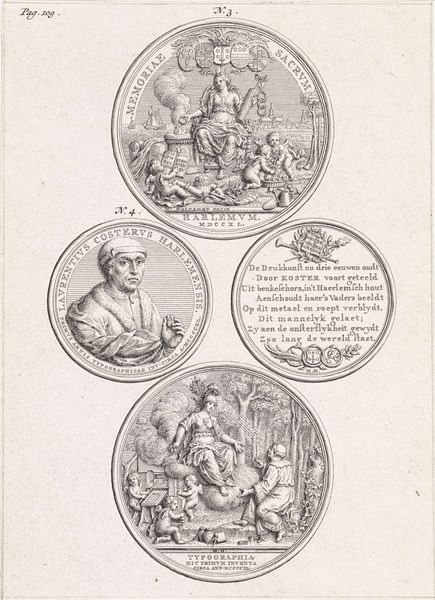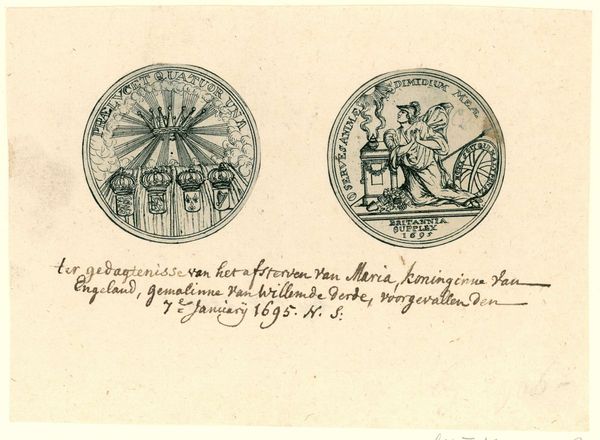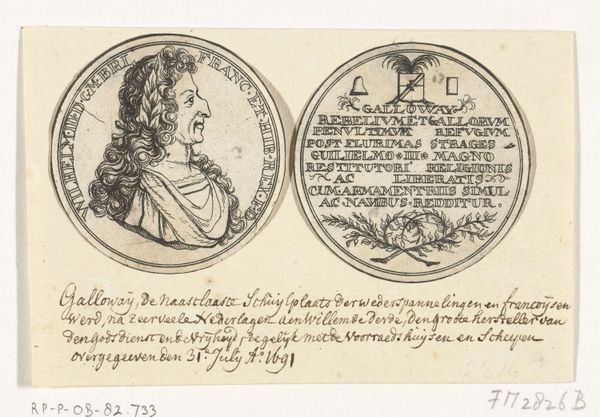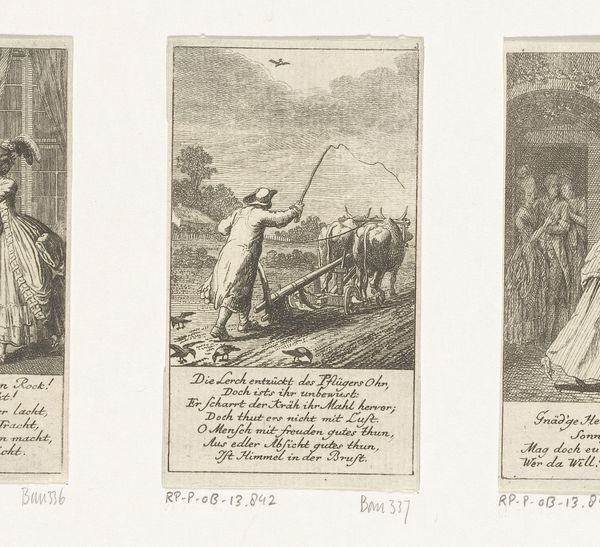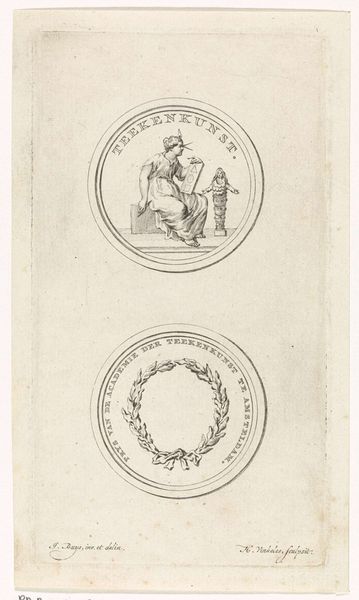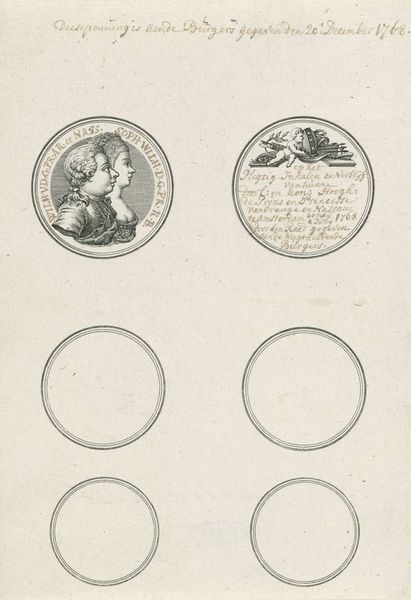
drawing, print, etching, ink, engraving
#
drawing
#
baroque
# print
#
etching
#
ink
#
history-painting
#
engraving
Dimensions: height 59 mm, width 119 mm
Copyright: Rijks Museum: Open Domain
Editor: Here we have "Penning op de dood van de gebroeders De Witt," a Dutch Golden Age print from around 1672, artist unknown. It looks like an etching or engraving, with text and imagery packed into these circular frames. It’s a bit gruesome, to be honest. What do you see in it? Curator: I see a potent layering of symbol. The image of Jan and Cornelis de Witt being paraded after their murder is not merely representational. Note how they are being drawn in a chariot, an echo of triumph, yet here it is an image of utter desecration and failure. This co-opting and inverting of triumphant imagery emphasizes the ephemeral nature of power. Do you see the images at the top? Editor: Yes, like heraldic crests...almost mocking them. There's one that looks like a crouching monkey. And next to it... are those men climbing steps towards the gallows? Curator: Precisely! They speak to specific historical narratives. These weren't simply murders, but meticulously staged events freighted with symbolism intended to communicate a shift in the political landscape. Look how fortune, suggested by the wheel, becomes an emblem for public disgrace. The composition deliberately evokes the idea of justice turned upside down. Consider how this small, unassuming print served as a vehicle to carry deeply complex ideas about cultural trauma and the fragility of political power. Editor: So, it's like a snapshot of a really dark moment, but with all these symbolic cues for viewers at the time? A coded message, almost. Curator: Exactly. Visual memory, like any form of collective memory, is carefully curated. These objects helped shape and cement public understanding of that traumatic event. It's a reminder that images, even those that appear simple, can be powerful instruments of historical interpretation and even manipulation. Editor: Wow. I'll definitely look at prints differently from now on! There’s so much going on under the surface. Curator: Indeed. Understanding the language of symbols unlocks deeper stories.
Comments
No comments
Be the first to comment and join the conversation on the ultimate creative platform.
